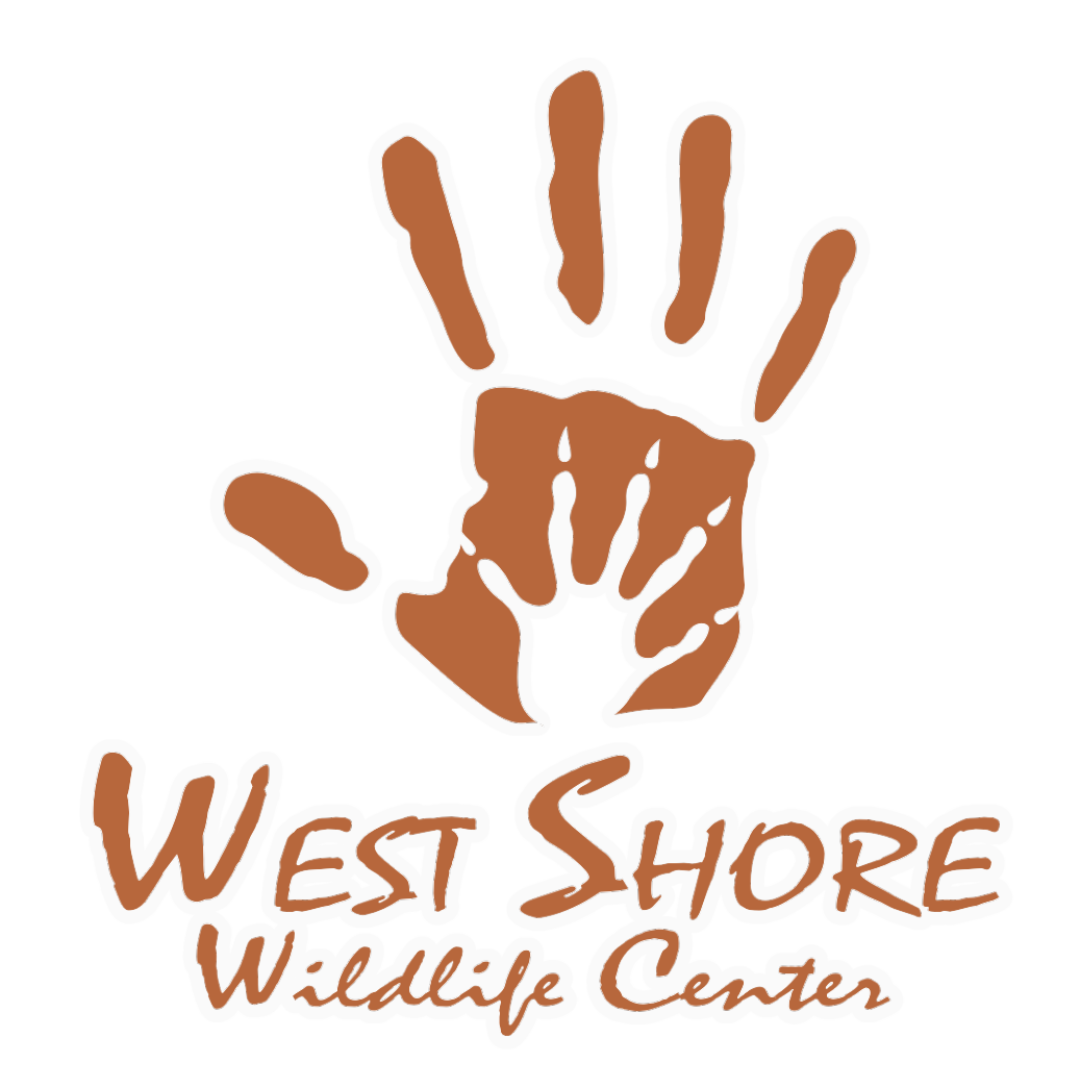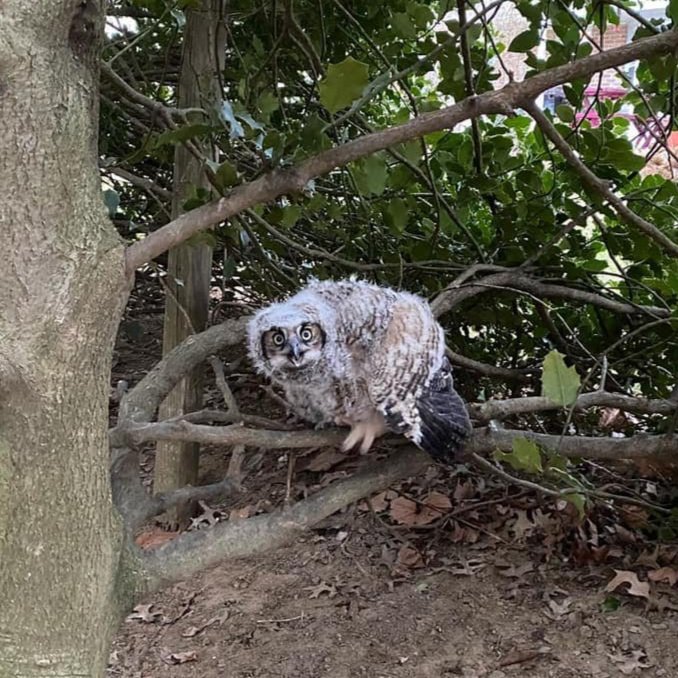
Help! I Found a Raptor!
Pennsylvania is home to a variety of raptors, including many different species of hawks, eagles, owls and falcons. Many raptors produce a single brood each year, but some species can have multiple. A few of the backyard raptors we commonly receive calls about include Red-Tailed Hawks, Screech Owls, Great-Horned Owls and Kestrels.
Remember: It is illegal to keep and raise wildlife
Myth: Raptors will abandon their babies because you touched them!
If You Find a Raptor That:
Is on the ground unresponsive or a parent raptor has not returned to feed the baby within 2 hours (or within 2 hours after dusk for nocturnal species)
Is bleeding or has obvious injuries to its legs or wings
Has parasites, including fly eggs (look like little grains of rice)
Has been fed or cared for by people
Has been in a dog or cat’s mouth
Has been hit by a car
Has struck a window
Does not fly away when approached by people and is not obviously eating
This is an emergency. Receive immediate support here or contact your local wildlife rehabilitator.
If You Find a Raptor That:
Is on a tree branch or the ground, has a mix of down feathers and adult feathers and can stand/perch on its own
Is on ground, has fluffy down feathers and can be easily placed back into the nest
This is normal! Juvenile birds, called fledglings or branchers, are often found on the ground while they are learning to fly and should be left alone. For more solutions to common problems with raptors in human spaces, visit this page.
How To Save Baby and Juvenile Raptors
Baby raptors are born covered in a soft down coat with hooked beaks and sharp talons. Their eyes remain closed for the first two weeks after hatching.
Baby raptors that have fallen from their nest may be able to be renested, but you should always contact a wildlife rehabilitator first to determine if this is the best option as injuries from the fall can happen. Young birds are highly susceptible to imprinting (when a baby comes to recognize an animal or person as a parent) or becoming too friendly with people, which can prevent them from being released back into the wild.
Before removing a young raptor from where it was found, make sure to record the exact location, what trees/structures surround it and if there are any adult raptors seen or heard nearby.
These are nestlings. These birds should be in the nest at all times and are reliant on their parents. It is normal to not see the parent with the baby birds for extended periods.
This is a fledgling or brancher. It is normal to see raptors this age on the ground or on branches near their nest. The parents are still caring for their babies. Keep pets and people away from the area.
To the right is a juvenile. Young raptors often stay with their parents, learning how to hunt for extended periods. Juveniles may look different than adults but have similar behaviors and can fly.
How To Renest Raptor Nestlings or Hatchlings
Do not feed the bird and be prepared to transport it to a rehabilitator right away. Baby birds have very specific diets and need fed often.
Carefully check the bird for injuries. Most often, the bird is okay, but injuries do happen! Contact a wildlife rehabilitator if the baby is injured.
If the baby is healthy, place it back in the nest. Then, skip to step 7. If you are unable to locate a nearby nest, continue following steps 4-7.
Create a new nest using a wicker basket or plastic container with drainage holes in the bottom. Drainage holes are important to ensure the nest does not fill up when it rains. This style of nest is not suitable for cavity nesters — see the section below.
Fill the new nest with any remaining nesting material from the original nest. Fill the container slightly above the brim with shredded paper, grass clippings or soft straw. Filling the container all the way allows the adult bird a better place to perch when feeding the babies.
Attach the new nest as close to the old one as possible. Attach the nest securely enough that it will not fall during a storm. Place the babies back inside the new nest.
Watch the nest from a distance. Keep in mind that most adult birds will not come back if humans and pets are near. If you see adult birds chirping and flying above, that is a great sign! The parents only visit the nest for a few short seconds to feed. You will likely not see the parents stay on the nest. Consistently watch the nest for at least one hour before determining if the birds are orphaned.
How To Save Adult Raptors
It is common for adult raptors to perch in one spot for long periods, and it usually indicates they are resting, digesting a meal or watching for prey. They can occasionally also be found sitting on the ground in cases where they have just captured prey or are in the process of eating it.
If an adult raptor has been sitting on the ground for more than two hours or has been perching in the same spot for more than 24 hours, it likely requires medical attention.
If you find an adult raptor on the ground, assuming a defensive position when approached (flip onto their backs with their feet poised in the air), they are likely in need of assistance. However, direct handling of a raptor in this position presents a significant risk of injury to the handler and therefore, the box-over method of capturing is recommended for the general public. Place a large box with breathing holes over the raptor to keep it calm and safe.
If a raptor collided with a window or vehicle, they are most likely to experience serious internal injuries. Sometimes when a bird has experienced a collision, they become stunned and their behavior can appear calm and docile. But even if a raptor is acting calm, take extreme caution when capturing, handling and transporting them as they can quickly regain their defensive instincts at any moment.
Contact your local wildlife rehabilitator if you find an adult raptor in any of the above situations for immediate medical attention. For more solutions to common problems with raptors in human spaces, visit this page.
Adult raptors can sadly be victims of a variety of human-caused injuries and ailments such as electrocutions, poisonings and shootings. Injuries to even their feathers can be life threatening as the bird may not be able to care for itself without perfect flight. Anytime a bird is obviously injured, or is not acting as you would expect, you should contact a licensed wildlife rehabilitator for advice.
Do you still have questions after reading the information above? Contact us or a local wildlife rehabilitator!
Have you found this FREE information helpful? Help support our work and expand our services by giving a gift.
Resources
Answering the Call of the Wild by Erin Luther. Toronto Wildlife Centre.




